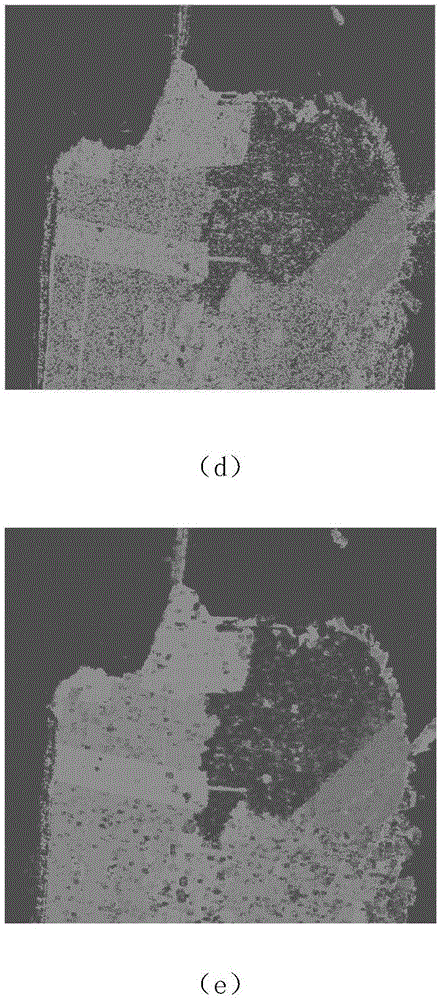Polarized SAR image classification method based on sparse coding and wavelet auto-encoder
A sparse auto-encoder and sparse coding technology, applied in the field of polarization synthetic aperture radar SAR image classification, can solve the problems of not having time-frequency local properties, not considering the spatial correlation of polarization SAR images, and large amount of calculation, etc. Good time-frequency local properties, excellent feature expression ability, and the effect of removing coherent speckle noise
- Summary
- Abstract
- Description
- Claims
- Application Information
AI Technical Summary
Problems solved by technology
Method used
Image
Examples
Embodiment Construction
[0046] The present invention will be described in detail below in conjunction with the accompanying drawings.
[0047] refer to figure 1 , to further describe in detail the specific implementation steps of the present invention.
[0048]Step 1, input image.
[0049] Input the covariance matrix of a polarimetric SAR image to be classified. The source of the polarimetric SAR data is the L-band data acquired by the NASA / JPL laboratory AIRSAR sensor in the San Francisco Bay Area in 2008. The resolution is 10*5m, and the size It is 1800*1380 pixels. The size of the covariance matrix of the image is 3*3*N, where N is the total number of pixels in the polarimetric SAR image.
[0050] Input the real object marker image of the polarization synthetic aperture radar SAR image to be classified.
[0051] Step 2, preprocessing.
[0052] The refined Lee filter is used to filter the covariance matrix to remove the speckle noise, and the filtered matrix of each pixel of the polarimetric S...
PUM
 Login to View More
Login to View More Abstract
Description
Claims
Application Information
 Login to View More
Login to View More - R&D
- Intellectual Property
- Life Sciences
- Materials
- Tech Scout
- Unparalleled Data Quality
- Higher Quality Content
- 60% Fewer Hallucinations
Browse by: Latest US Patents, China's latest patents, Technical Efficacy Thesaurus, Application Domain, Technology Topic, Popular Technical Reports.
© 2025 PatSnap. All rights reserved.Legal|Privacy policy|Modern Slavery Act Transparency Statement|Sitemap|About US| Contact US: help@patsnap.com



